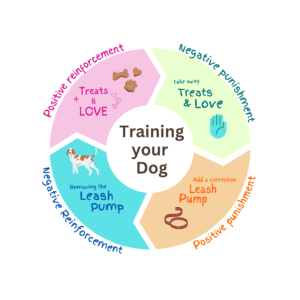The command structure in dog training. This is how you speak to your dog in a way that they can understand and is predictable. An example would be Dogs Name – Sit. Dog sits praise. Again, this goes back to our A-B-C. A is the dog’s name, B is the dog sitting and C is the reinforcement. It’s very simple. The only time we use the dog’s name is when we are going to give a command. The dog becomes classically conditioned to associate its name with something that is about to happen with my human. Dog training command structure is the start of good training. To learn more reach out to us today.

Dog Training Command Structure: Building a Strong Relationship with Your Canine Companion
Dog training commands lay the foundation for a harmonious relationship between dogs and their owners. By establishing a clear command structure, owners can effectively communicate with their furry friends and instill obedience. This article delves into the intricacies of dog training commands, covering both basic and advanced techniques, while emphasizing the importance of positive reinforcement and consistency.
Basic Dog Training Commands
- Sit: Teaching your dog to sit is one of the fundamental commands. It’s a simple yet essential skill that sets the stage for further training.
- Stay: The “stay” command teaches dogs to remain in a specific position until released. It’s crucial for safety and control in various situations.
- Come: A reliable recall command is vital for keeping your dog safe and under control, especially when off-leash.
- Down: This command instructs your dog to lie down on command, promoting calmness and relaxation.
- Heel: Walking politely on a leash is taught through the “heel” command, ensuring controlled and enjoyable walks.
Advanced Dog Training Commands
- Leave it: Teaching your dog to leave items alone can prevent unwanted behaviors such as scavenging or chewing.
- Drop it: The “drop it” command encourages your dog to release objects from their mouth, promoting safety and preventing resource guarding.
- Wait: This command teaches patience and self-control, useful in various situations such as crossing roads or waiting at doorways.
- Watch me: Establishing eye contact on command strengthens the bond between you and your dog while enhancing focus and attention during training sessions.
These are the Command words for dog Training.
Effective Communication in Dog Training
Building a strong bond with your dog is essential for effective communication. Positive reinforcement techniques, such as using treats and praise, help reinforce desired behaviors while maintaining a positive training environment.
Consistency and clarity are key elements of successful communication. Using the same command words and gestures consistently ensures that your dog understands what is expected of them.
Creating a Command Structure
Designing a command structure involves creating a systematic training plan tailored to your dog’s needs and abilities. Start with basic commands and gradually introduce more advanced ones as your dog progresses.
Positive Reinforcement Techniques
Reward-based training methods are highly effective in motivating dogs to learn and obey commands. By associating commands with positive experiences, such as treats or playtime, dogs are more likely to repeat desired behaviors.
The Role of Body Language and Tone
Effective communication extends beyond verbal commands. Pay attention to your body language and tone of voice, as dogs are highly attuned to non-verbal cues. Use a confident and assertive tone to convey commands clearly.
Conclusion: A Harmonious Bond Through Command Structure
In conclusion, at Species K9, we understand that dog training command structure serves as the cornerstone of effective communication and obedience training. Our dog training services in Waco are tailored to help you build a harmonious bond with your canine companions. By embracing a natural approach, focusing on positive reinforcement, and customizing training plans to meet the needs of individual dogs, we empower both you and your furry friend to succeed together. So, unlock the power of Command structure in dog training and connection with Species K9. Join us next time as we continue to explore the world of dog training and behavior. Until then, happy training!
FAQ’s
How long does it take to train a dog with basic commands?
Training duration varies depending on the dog’s breed, age, and temperament. Consistent practice and positive reinforcement are key factors in achieving desired results.
What if my dog doesn’t respond to commands?
If your dog is not responding to commands, reassess your training methods and seek professional guidance if necessary. Patience and consistency are essential in overcoming training challenges.
How often should I train my dog?
Aim for short, frequent training sessions rather than long, intensive ones. Training for a few minutes several times a day is more effective than one extended session.
